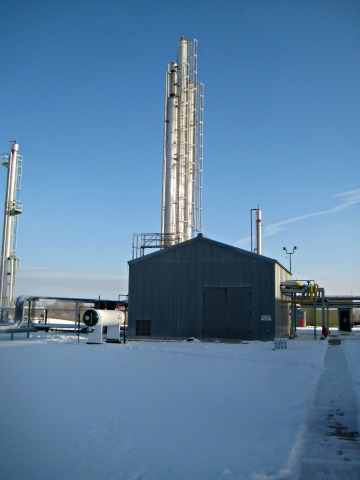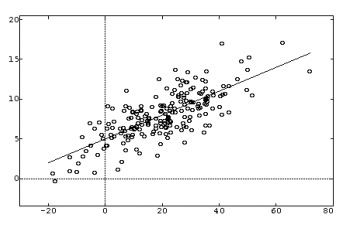- Air Homepage
- Air Quality Testing
- Environmental Impact Assessment
Environmental Impact Assessment & The Hidden Consequences of Air Pollution
Search for more environment information.
Why do you need an environmental impact assessment (EIA)? Several of them look at the socio-economic and environmental impacts of new industrial projects, by themselves and in conjunction with other industries. Air and water pollution, climate change, public lands, plants, animals, and historical resources should all be addressed through legislation.
Why EIAs so important for evaluating the socio-economic and environmental impacts of industrial projects? Here I show how EIAs protect against air and water pollution, climate change, and the preservation of public lands, wildlife, and historical resources.
Learn about air quality analysis, how to manage air emissions, and how air pollution affects human health and the environment. Cleaner, healthier skies can be achieved through monitoring, mitigation, and sustainable practices.
In addition to protecting commercial resources, EIAs also protect fisheries, pipelines, mineral resources, and transportation. Public and government input is needed for an EIA. In an EIA, what kind of air quality impact analysis is discussed?
Management of Air Emissions
Discuss the types, sources, and rates of emissions expected for construction and operation. The following may be included:
- Road dust, fugitive emissions, point, line, and area sources. You should also include upset conditions and routine flaring if applicable, as well as visible and smelly substances
- Estimated greenhouse gases (GHG) from the project (all stages). Calculate the major GHG sources. Compare the amount of GHG emissions for each unit of goods produced with existing projects.
- How much GHGs will it add to the regional or national total? How does the company manage greenhouse gases and global warming?
- Find out the type and quantity of Criteria Air Contaminants (which cause health hazards, smog, and acid rain).
- How much acidifying stuff will be emitted? Include likely patterns and rates of deposition.
- How will air emissions be controlled? Sulfur dioxide (SO₂), hydrogen sulfide (H₂S), greenhouse gases, nitrogen oxides (NO₂), volatile organic compounds (VOC), particulate matter (PM₁₀, PM and others), polycyclic aromatic hydrocarbons (PAH), ammonia (NH3), mercury (Hg), lead (Pb), and carbon monoxide (CO) are a few things to think about.
- What's the plan for detecting, measuring, and fixing fugitive emissions (leaks)? Unchecked leaks can cause serious odours.
- Are there any emergency flare-ups or upset conditions? When and how long? How will these events be minimized?
During the environmental impact assessment, you should talk about how gases will be collected, conserved, and how vapour recovery technologies will be used. Discuss sulphur recovery, if applicable, and re-injection of acid gas and desulphurization of gases to be released. Sulphur emissions have been decreasing as these measures are implemented.
Environmental Impact Assessment of Air Quality, Noise and Climate
Environmental Impact Assessments usually start with Background Information. Provide information about air quality and climate conditions, like:
- Weather conditions that lead to bad air quality and how often they happen
- Measurements of SO₂, CO, H₂S, NO₂, VOCs, Total Hydrocarbons (THC), PAHs, any specific hydrocarbons people should care about, heavy metals, particulates (including dust, PM and PM₁₀), odours, ground-level Ozone (O₃) and visibility.
Measure existing noise levels around the project, too. The EIA looks at the project's environmental impact.
- How will the project change the air quality?
- After the project, will air quality, odours, and visibility be worse, and will public health or environmental protection be affected?
- How will the concentrations of the substances listed above change? Air dispersion modelling will help.
- Include the source parameters, terrain and meteorological data used in the modelling.
- If you have any air monitoring info, please provide it.
- How will air pollution affect us? How will air quality impacts increase human exposure to contaminants? Describe food, water, and breathing.
- How have neighbours and other stakeholders felt about the project? To protect the environment and prevent health problems, compare estimates to established exposure limits.
- Is there going to be more particulate, nitrogen, or acid deposition?
- Is there a problem with Potential Acid Input (PAI)?
- How could two or more substances complicate things?
- What effects will air quality have on other parts of the environment? Think about soil, vegetation, water quality, and habitat diversity and quantity.
Which parts of the project are most affected by climate change? Extreme weather events could get worse and more frequent. Could these climate changes affect any project components that are weather-sensitive?
What parts of the project will increase noise? Does it matter? Here's what a detailed examination should have:
- Affected people and animals.
- Estimate the increase in noise levels that might happen during or after construction.
- Is it worth it to have higher noise levels?
What can the developers do to reduce or manage the project's impact on noise and air quality? Both immediate and long-term concerns should be addressed in this environmental impact assessment.
Air Quality and Noise Monitoring
What kind of monitoring will there be? Describe how it will address noise and air quality issues and how monitoring can be used to determine if mitigation worked. Describe any monitoring programs for acid deposition.
In an EIA, these are the air-related terms. Check out the environmental department of the relevant governing authority for a more detailed description or terms of reference for an environmental impact assessment in your region.
All nature-related aspects, like water, land/terrain/soils, geology, hydrogeology, human health, vegetation, wildlife, and other ecological factors, should be considered in an environment impact assessment. All these elements need to be evaluated to identify potential risks. impact a
For instance, a hydrogeological assessment can tell you if a project will affect groundwater, and a soil assessment can tell you if it'll affect land stability. In addition, a health assessment can help identify any potential health risks.
There are thousands of pages in most of environmental impact assessments I have worked on. For help with the air quality portion of your company's assessment, please email Barry J. Lough at Calvin Consulting Group Ltd. right here:
Go back from Environmental Impact Assessment to the Air Quality Testers webpage.
Air Quality Impact Assessment: Work to be done
Before proceeding with industrial development, extensive research must be conducted. The preliminary work would include market and economic analyses, an environmental impact assessment, and a number of other reports.
Do you have concerns about air pollution in your area??
Perhaps modelling air pollution will provide the answers to your question.
That is what I do on a full-time basis. Find out if it is necessary for your project.
Have your Say...
on the StuffintheAir facebook page
Other topics listed in these guides:
The Stuff-in-the-Air Site Map
And,
Thank you to my research and writing assistants, ChatGPT and WordTune, as well as Wombo and others for the images.
GPT-4, OpenAI's large-scale language generation model (and others provided by Google and Meta), helped generate this text. As soon as draft language is generated, the author reviews, edits, and revises it to their own liking and is responsible for the content.






New! Comments
Do you like what you see here? Please let us know in the box below.